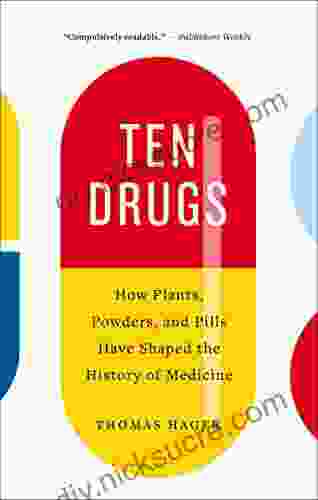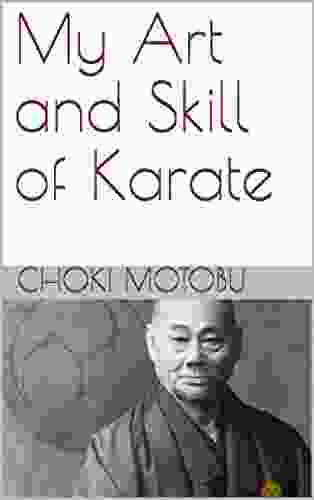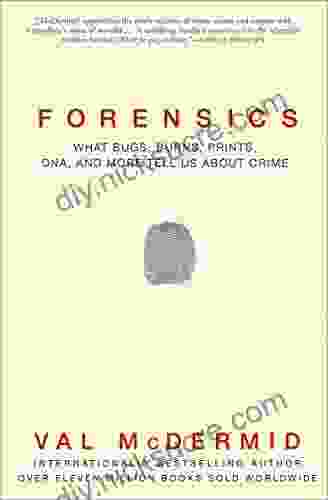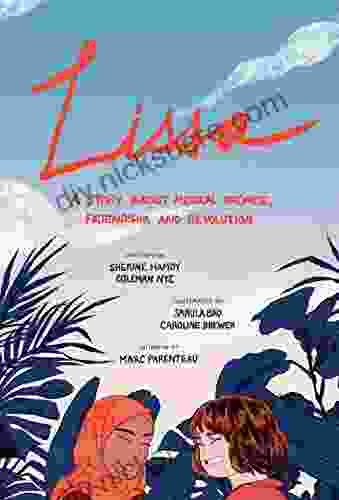How Plants Powders And Pills: An In-Depth Look into Their Enduring Role in the Evolution of Medicine

Since the dawn of humanity, plants have been an integral part of our survival. Beyond providing sustenance, plants have also played a crucial role in the development of medicine, with their healing properties exploited by civilizations across the globe for centuries.
This article will delve into the fascinating history of plant powders and pills, exploring their profound impact on the evolution of medicine and their enduring presence in modern healthcare.
4.7 out of 5
| Language | : | English |
| File size | : | 5738 KB |
| Text-to-Speech | : | Enabled |
| Screen Reader | : | Supported |
| Enhanced typesetting | : | Enabled |
| X-Ray | : | Enabled |
| Word Wise | : | Enabled |
| Print length | : | 308 pages |
| Lending | : | Enabled |
The Origins of Herbal Remedies
The earliest evidence of plant-based medicines dates back to the Stone Age, with archaeological evidence suggesting that humans were utilizing medicinal plants as early as 60,000 years ago.
Ancient civilizations, such as the Egyptians, Greeks, and Chinese, developed sophisticated systems of herbal medicine, meticulously documenting the therapeutic uses of various plants.
These early healers relied on plants not only for their medicinal effects but also for their symbolic significance. Plants were often associated with specific deities or spirits, and their use in healing ceremonies was believed to enhance their potency.
The Rise of Powders and Pills
As civilizations advanced, so did the methods of preparing and administering plant-based remedies. One significant development was the creation of powders and pills, which allowed for easier storage, transport, and dosage control.
Powdered plants could be mixed into drinks, sprinkled on wounds, or inhaled, while pills offered a convenient and standardized way to administer specific doses of active ingredients.
The use of plant powders and pills became particularly prevalent during the Middle Ages, when trade routes expanded and new plants were introduced to different regions.
Plant Powders and Pills in Renaissance and Early Modern Medicine
The Renaissance and early modern period witnessed a surge in interest in plant-based remedies, driven by advancements in botany and the rise of scientific inquiry.
Herbaria, or collections of dried plants, became popular, and physicians relied heavily on printed herbals for information on the medicinal uses of various species.
During this time, plant powders and pills continued to play a significant role in medicine, with apothecaries specializing in the preparation and dispensing of these remedies.
The Enlightenment and the Rise of Rational Medicine
The Enlightenment period saw a shift towards a more rational and scientific approach to medicine. However, despite the advances made in anatomy and physiology, plant-based remedies remained an important part of medical practice.
Physicians such as William Cullen and John Brown advocated for the use of plant powders and pills as they believed that these remedies could stimulate or depress specific bodily systems.
The Industrial Revolution and the Advent of Pharmaceuticals
The Industrial Revolution brought about significant changes in the production and distribution of medicines. The development of new technologies, such as steam power and mass production, enabled the large-scale manufacture of pharmaceutical products.
As a result, synthetic pharmaceuticals gradually replaced plant-based remedies as the primary form of medicine in the Western world.
The Rediscovery of Plant Medicines
Despite the rise of pharmaceuticals, the use of plant powders and pills never entirely disappeared. In the late 19th and early 20th centuries, a renewed interest in natural remedies emerged.
This resurgence was driven in part by the growing dissatisfaction with the side effects of synthetic drugs and a desire to return to more holistic approaches to health.
Plant Powders and Pills in Modern Medicine
Today, plant powders and pills continue to play an important role in modern healthcare, both as complementary and alternative therapies.
Herbal supplements, such as echinacea, garlic, and ginseng, are widely used to support immune function, improve overall well-being, and treat various minor ailments.
Additionally, plant-derived active ingredients are often incorporated into prescription drugs, such as aspirin (derived from willow bark) and digoxin (derived from foxglove).
The history of plant powders and pills is a testament to the enduring power of nature's healing wisdom. From the earliest herbalists to modern-day physicians, these plant-based remedies have shaped the evolution of medicine and continue to play a vital role in global healthcare.
As we continue to explore the vast potential of the plant kingdom, we can be confident that plant powders and pills will remain an integral part of our medical arsenal for generations to come.
4.7 out of 5
| Language | : | English |
| File size | : | 5738 KB |
| Text-to-Speech | : | Enabled |
| Screen Reader | : | Supported |
| Enhanced typesetting | : | Enabled |
| X-Ray | : | Enabled |
| Word Wise | : | Enabled |
| Print length | : | 308 pages |
| Lending | : | Enabled |
Do you want to contribute by writing guest posts on this blog?
Please contact us and send us a resume of previous articles that you have written.
 Fiction
Fiction Non Fiction
Non Fiction Romance
Romance Mystery
Mystery Thriller
Thriller SciFi
SciFi Fantasy
Fantasy Horror
Horror Biography
Biography Selfhelp
Selfhelp Business
Business History
History Classics
Classics Poetry
Poetry Childrens
Childrens Young Adult
Young Adult Educational
Educational Cooking
Cooking Travel
Travel Lifestyle
Lifestyle Spirituality
Spirituality Health
Health Fitness
Fitness Technology
Technology Science
Science Arts
Arts Crafts
Crafts DIY
DIY Gardening
Gardening Petcare
Petcare Jec Aristotle Ballou
Jec Aristotle Ballou Rekha Ramcharan
Rekha Ramcharan Walter Dean Myers
Walter Dean Myers Matt Brown
Matt Brown A M Strickland
A M Strickland Sean Skahan
Sean Skahan Josh Skeen
Josh Skeen Thomas Mcguane
Thomas Mcguane Lindsey Lapointe
Lindsey Lapointe Peter Zheutlin
Peter Zheutlin Ari Tuckman
Ari Tuckman Eric Blehm
Eric Blehm Gordon Macquarrie
Gordon Macquarrie Polly Moore
Polly Moore A F Stewart
A F Stewart W Timothy Gallwey
W Timothy Gallwey King Solomon
King Solomon A J Stewart
A J Stewart Tsao Lin E Moy L Ac Msom
Tsao Lin E Moy L Ac Msom Jan Morris
Jan Morris Sergey Kosarevsky
Sergey Kosarevsky Bob Frye
Bob Frye Linh Phung
Linh Phung Laura Pohl
Laura Pohl Iasha King
Iasha King N J Enfield
N J Enfield Lindsey Vonn
Lindsey Vonn Ray Ordorica
Ray Ordorica Valerio Varesi
Valerio Varesi Ed Webster
Ed Webster Cath Smith
Cath Smith The R A
The R A William Ramsey
William Ramsey Leslie Stager
Leslie Stager K A Riley
K A Riley Jim Allen
Jim Allen Meghan Leahy
Meghan Leahy Chelsea Crockett
Chelsea Crockett Nick Jackson
Nick Jackson Roger Zelazny
Roger Zelazny Eva Mauer
Eva Mauer Anne Deans
Anne Deans Michael Dell
Michael Dell Robert P Harris
Robert P Harris Jonathan S Rose
Jonathan S Rose Jon Gillespie Brown
Jon Gillespie Brown Alyssa Padgett
Alyssa Padgett Erin Watt
Erin Watt Scientia Media Group
Scientia Media Group Bruce Lansky
Bruce Lansky Dr Stephanie Bloodworth Psyd
Dr Stephanie Bloodworth Psyd Okina Baba
Okina Baba Todd Downs
Todd Downs Harry Yoon
Harry Yoon Heather Gudenkauf
Heather Gudenkauf Sadie Robertson Huff
Sadie Robertson Huff Max Tegmark
Max Tegmark Pintip Dunn
Pintip Dunn Paul Mccarthy
Paul Mccarthy Rebecca Pelky
Rebecca Pelky Andreas Quast
Andreas Quast Paul Watzlawick
Paul Watzlawick Mrjamvad
Mrjamvad Emily Evans
Emily Evans Micha Gorelick
Micha Gorelick Val Mcdermid
Val Mcdermid Russell Sher
Russell Sher Aaron Kleinmeyer
Aaron Kleinmeyer Ken Alder
Ken Alder Noah Gift
Noah Gift Philip Golding
Philip Golding Anne Sigismund Huff
Anne Sigismund Huff William Bauer
William Bauer Zen Lylah
Zen Lylah Bob Plager
Bob Plager John Halligan
John Halligan Carrie Harper
Carrie Harper Sherine Hamdy
Sherine Hamdy Brad K Chambers
Brad K Chambers Diane Stresing
Diane Stresing Eileen Tracy
Eileen Tracy Tiara R Brown
Tiara R Brown Bruce Collier
Bruce Collier Andrea Falk
Andrea Falk Todd Rose
Todd Rose Lauren Muhlheim
Lauren Muhlheim Frost Kay
Frost Kay Raymond J Carroll
Raymond J Carroll Daniel S Pierce
Daniel S Pierce Jose M Forero Bautista
Jose M Forero Bautista Sarah Jo Brown
Sarah Jo Brown Joshua Akin
Joshua Akin Tanya Selvaratnam
Tanya Selvaratnam Vitaly Pedchenko
Vitaly Pedchenko Lillian Tibbles Phd
Lillian Tibbles Phd Peter Nichols
Peter Nichols Mj Porter
Mj Porter Jennifer Longmore
Jennifer LongmoreA G
 Gabrielle Coleman
Gabrielle Coleman Garret Romaine
Garret Romaine Din Daniels
Din Daniels Raymond M Smullyan
Raymond M Smullyan Angela Himsel
Angela Himsel Mike Tidwell
Mike Tidwell Sherrilyn Kenyon
Sherrilyn Kenyon Patrick Meechan
Patrick Meechan Peter Goldenthal
Peter Goldenthal Rafe Esquith
Rafe Esquith Tom Jordan
Tom Jordan Toni Natalie
Toni Natalie Gemma Milne
Gemma Milne Nicole Conway
Nicole Conway Christine Wheeler
Christine Wheeler Leandro Taub
Leandro Taub Eugene Don
Eugene Don Dr Alan Whitcomb
Dr Alan Whitcomb Dr Tricia Groff
Dr Tricia Groff Rachael Allen
Rachael Allen Arlin Smith
Arlin Smith Rysa Walker
Rysa Walker Susan Striker
Susan Striker Dale Dougherty
Dale Dougherty Scott A Ostrow
Scott A Ostrow A L Graziadei
A L Graziadei Jordan B Peterson
Jordan B Peterson Thomas Hager
Thomas Hager Chuck Whelon
Chuck Whelon Stan Tenen
Stan Tenen Kerri Hummingbird Sami
Kerri Hummingbird Sami Remy Agee
Remy Agee A K Davidson
A K Davidson David Magee
David Magee Andrew Henderson
Andrew Henderson Thomas C Tabor
Thomas C Tabor Mia Kankimaki
Mia Kankimaki Anghel Leonard
Anghel Leonard Lisa Murphy
Lisa Murphy Rebecca A Moyes
Rebecca A Moyes Natalie Pompilio
Natalie Pompilio William F Mann
William F Mann Rina Kent
Rina Kent A J Carlisle
A J Carlisle Alexander Greenmaj
Alexander Greenmaj Matthew J Friedman
Matthew J Friedman William C Oakes
William C Oakes Armin A Brott
Armin A Brott Todd Wanerman
Todd Wanerman Dan Romanchik Kb6nu
Dan Romanchik Kb6nu Jm Mason
Jm Mason Glenn Patron
Glenn Patron Jennifer Senior
Jennifer Senior William Scott Wilson
William Scott Wilson Anthony J Onwuegbuzie
Anthony J Onwuegbuzie Michael Labossiere
Michael Labossiere Anna Goldsworthy
Anna Goldsworthy Dirk F Moore
Dirk F Moore Dane Huckelbridge
Dane Huckelbridge Dean R Johnson
Dean R Johnson Joe Navarro
Joe Navarro Susan Aud Sonders
Susan Aud Sonders Peter Godfrey Smith
Peter Godfrey Smith Marlynn Jayme Schotland
Marlynn Jayme Schotland Harrison Fluss
Harrison Fluss A G Howard
A G Howard Michael Lardon
Michael Lardon Hicham And Mohamed Ibnalkadi
Hicham And Mohamed Ibnalkadi Lyndall Clipstone
Lyndall Clipstone Timothy J Gawne
Timothy J Gawne Anji Andrews
Anji Andrews Leigh Newman
Leigh Newman Zander Brumbaugh
Zander Brumbaugh Sky Marsen
Sky Marsen Helen E Johnson
Helen E Johnson Roy Richard Grinker
Roy Richard Grinker Steve Hindman
Steve Hindman Brian Clegg
Brian Clegg E S Wynn
E S Wynn James Baldwin
James Baldwin Stan Skinner
Stan Skinner Sonya Chappell
Sonya Chappell Cassandra Clare
Cassandra Clare Linda Tuhiwai Smith
Linda Tuhiwai Smith Georgia Varozza
Georgia Varozza Francis Fukuyama
Francis Fukuyama Seth M Holmes
Seth M Holmes Yasu
Yasu Katerina Griffith
Katerina Griffith Randy Friedman
Randy Friedman John Brenkus
John Brenkus Michael Lanza
Michael Lanza Filippo Coarelli
Filippo Coarelli R A Mejia
R A Mejia Fernanda Pirie
Fernanda Pirie Marc S Sabatine
Marc S Sabatine A G Cairns Smith
A G Cairns Smith Cailin O Connor
Cailin O Connor Charles Edward Chapel
Charles Edward Chapel Todd Gitlin
Todd Gitlin David Deutsch
David Deutsch Dale P Clemens
Dale P Clemens Matthieu Ricard
Matthieu Ricard Catherine Rodgers
Catherine Rodgers Karla Helbert
Karla Helbert Crystal Cestari
Crystal Cestari Russell Davis
Russell Davis William Monk
William Monk Barry Werth
Barry Werth Richard Heath
Richard Heath A J Hamler
A J Hamler Michael Shingleton
Michael Shingleton Winston Starr
Winston Starr Christiane Kutik
Christiane Kutik Karl Knopf
Karl Knopf A M Wilson
A M Wilson Jennifer N Smith
Jennifer N Smith David J Vanbergen Jr
David J Vanbergen Jr Jennifer Trainer Thompson
Jennifer Trainer Thompson Mark Obmascik
Mark Obmascik Niall Ferguson
Niall Ferguson Philip Yarrow
Philip Yarrow John Almberg
John Almberg Dr Howard Rankin
Dr Howard Rankin Boston T Party
Boston T Party Eric Sevareid
Eric Sevareid Marks Prep
Marks Prep Akash Kapur
Akash Kapur Larit Levy
Larit Levy Timothy C Urdan
Timothy C Urdan Monte Burke
Monte Burke Lauren Oliver
Lauren Oliver Kenneth Cloke
Kenneth Cloke Adrian Dater
Adrian Dater Rosie Garthwaite
Rosie Garthwaite Oba Ilari Aladokun
Oba Ilari Aladokun David H Barlow
David H Barlow Helen Buckley
Helen Buckley Charles Butler
Charles Butler Nancy Mckenzie
Nancy Mckenzie Dan Limbaugh
Dan Limbaugh Helen Fitzgerald
Helen Fitzgerald David Remnick
David Remnick Chris I Naylor
Chris I Naylor Mandy Rivers
Mandy Rivers Lilin Yang
Lilin Yang Sarah Sutton
Sarah Sutton Chris Diamond
Chris Diamond Roxanne Martin
Roxanne Martin John L Messina
John L Messina John L Parker Jr
John L Parker Jr Giordano Scalzo
Giordano Scalzo Mark Ryan
Mark Ryan Ilya Ru
Ilya Ru Calvin L Chou
Calvin L Chou Jack Grimshaw
Jack Grimshaw Kelly Starrett
Kelly Starrett Sam Warburton
Sam Warburton Christopher Small
Christopher Small A J Messenger
A J Messenger Megan Vickers
Megan Vickers Peter Maas
Peter Maas Lucy Christopher
Lucy Christopher Eric Armstrong
Eric Armstrong Abigail Burd Lcsw Pmh C
Abigail Burd Lcsw Pmh C Kenay Keira
Kenay Keira Ken Dryden
Ken Dryden Tripp Bowden
Tripp Bowden Flo Perry
Flo Perry Amanda Ostrander
Amanda Ostrander David G Taylor
David G Taylor Rick Telander
Rick Telander Kathlyn Gay
Kathlyn Gay Watt Key
Watt Key Joseph Mctaggart
Joseph Mctaggart Ryan Gray
Ryan Gray John Long
John Long Adam Savage
Adam Savage Tony Wright
Tony Wright Tammara Webber
Tammara Webber Lou Tabory
Lou Tabory William Minto
William Minto Diane Burke Fessler
Diane Burke Fessler Lisa Pease
Lisa Pease Byron Pitts
Byron Pitts Jennie Finch
Jennie Finch Francis Pryor
Francis Pryor Jonalu Johnstone
Jonalu Johnstone Katrina Abbott
Katrina Abbott Lou Zambello
Lou Zambello Saxton Pope
Saxton Pope Cristian Salcescu
Cristian Salcescu A J Mackenzie
A J Mackenzie Kevin Adams
Kevin Adams Jane Austen
Jane Austen Thomas R Martin
Thomas R Martin Shanterra Mcbride
Shanterra Mcbride Jonathan Eig
Jonathan Eig Manoush Zomorodi
Manoush Zomorodi A J Angulo
A J Angulo Gary Gruber
Gary Gruber Peter Shelton
Peter Shelton Bryan Berg
Bryan Berg Bill Jones
Bill Jones Bruce Tremper
Bruce Tremper Louis Jacques Dorais
Louis Jacques Dorais Taha Sochi
Taha Sochi Kenneth Cline
Kenneth Cline Shenyang Guo
Shenyang Guo Dr Kevin Leman
Dr Kevin Leman Kathy Koch
Kathy Koch Heather Anderson
Heather Anderson Dave Lowry
Dave Lowry Olivia Smith
Olivia Smith Blair Holden
Blair Holden Cyndi Kinney
Cyndi Kinney A L Knorr
A L Knorr Charles Szypszak
Charles Szypszak John Mordechai Gottman
John Mordechai Gottman Dame Darcy
Dame Darcy Helen Marot
Helen Marot Bear Heart
Bear Heart Kenn Bivins
Kenn Bivins Raymonde Carroll
Raymonde Carroll Virginia Willis
Virginia Willis Businessnews Publishing
Businessnews Publishing Dawn Huebner
Dawn Huebner Len Fisher
Len Fisher Rebecca Black
Rebecca Black Joel David Hamkins
Joel David Hamkins Lilith Mclelland
Lilith Mclelland Cynthia Ulrich Tobias
Cynthia Ulrich Tobias Mitch Landrieu
Mitch Landrieu John D Currid
John D Currid Jamie Vardy
Jamie Vardy Loretta Sponsler
Loretta Sponsler Certsquad Professional Trainers
Certsquad Professional Trainers Day Leitao
Day Leitao Sandra Swenson
Sandra Swenson David A Wells
David A Wells A J Mackinnon
A J Mackinnon Homeira Qaderi
Homeira Qaderi Freya Hoffmeister
Freya Hoffmeister Michelle Maccarthy
Michelle Maccarthy Jean Philippe Dionne
Jean Philippe Dionne Soap2day Publication
Soap2day Publication George Francis Dow
George Francis Dow Sharie King
Sharie King Matilda Ramsay
Matilda Ramsay Alex Karp
Alex Karp Upton Sinclair
Upton Sinclair Don Fink
Don Fink David Spiegelhalter
David Spiegelhalter Susan Cooper
Susan Cooper Tim Flanagan
Tim Flanagan Corina Morariu
Corina Morariu Susanne Foitzik
Susanne Foitzik Steve Angers
Steve Angers Joe Pepitone
Joe Pepitone Ray Bradbury
Ray Bradbury Caspar Craven
Caspar Craven Steven Raichlen
Steven Raichlen John Williams
John Williams Judi Garman
Judi Garman Hazel Holmes
Hazel Holmes Vernon Trafford
Vernon Trafford Sandra Niche
Sandra Niche Val Emmich
Val Emmich Grady Hendrix
Grady Hendrix A H Almaas
A H Almaas Michael D Coogan
Michael D Coogan Marcus Butler
Marcus Butler Bob Trueman
Bob Trueman A R Vasishtha
A R Vasishtha Dmv Test Bank
Dmv Test Bank Shelly Mazzanoble
Shelly Mazzanoble Peter Rees
Peter Rees Pardha S Pyla
Pardha S Pyla Jeff Kane
Jeff Kane Zen Faulkes
Zen Faulkes Pete Ripmaster
Pete Ripmaster Stephen R Lawhead
Stephen R Lawhead Jim Vernes
Jim Vernes Jamal Moustafaev
Jamal Moustafaev Bree Moore
Bree Moore Lyla Lee
Lyla Lee Ridge Magee
Ridge Magee A Roger Ekirch
A Roger Ekirch Alison Cotter
Alison Cotter Rens Bod
Rens Bod Mike Branon
Mike Branon Jonathan Mckee
Jonathan Mckee Cathy A Malchiodi
Cathy A Malchiodi Jennifer L Armentrout
Jennifer L Armentrout Shauna Lynn Panczyszyn
Shauna Lynn Panczyszyn Elisabeth Fassas
Elisabeth Fassas Amos Yong
Amos Yong Alf Wilkinson
Alf Wilkinson Ken Castor
Ken Castor Barbara J Bain
Barbara J Bain Catherine Stonehouse
Catherine Stonehouse
Light bulbAdvertise smarter! Our strategic ad space ensures maximum exposure. Reserve your spot today!
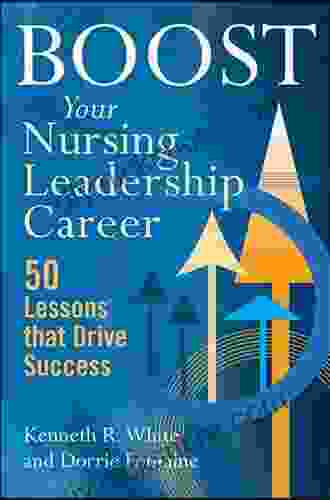
 Robert Louis StevensonBoost Your Nursing Leadership Career: A Comprehensive Guide to Advance Your...
Robert Louis StevensonBoost Your Nursing Leadership Career: A Comprehensive Guide to Advance Your... Mario Vargas LlosaFollow ·17.8k
Mario Vargas LlosaFollow ·17.8k Bryson HayesFollow ·7.2k
Bryson HayesFollow ·7.2k Stephen FosterFollow ·4.1k
Stephen FosterFollow ·4.1k Joe SimmonsFollow ·12.4k
Joe SimmonsFollow ·12.4k Nathaniel HawthorneFollow ·2.5k
Nathaniel HawthorneFollow ·2.5k Jamison CoxFollow ·16.3k
Jamison CoxFollow ·16.3k Roberto BolañoFollow ·2.3k
Roberto BolañoFollow ·2.3k Mitch FosterFollow ·15.6k
Mitch FosterFollow ·15.6k
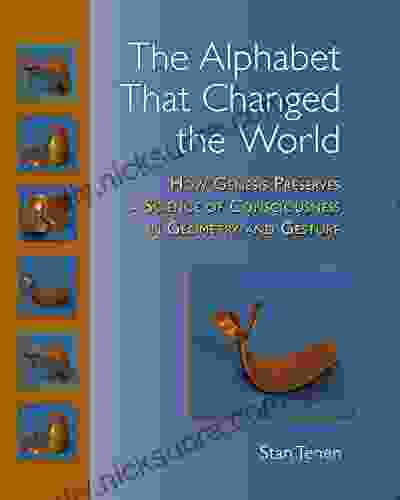
 Franklin Bell
Franklin BellHow Genesis Preserves Science Of Consciousness In...
The book of Genesis is...

 Ted Simmons
Ted SimmonsAt Day's Close, Night in Times Past
As the sun dips...

 Kenneth Parker
Kenneth ParkerRose Under Fire: Code Name Verity - A Heartbreaking and...
In the annals of...

 Jerry Hayes
Jerry HayesNurturing Massage for Pregnancy: A Comprehensive Guide to...
Pregnancy is...

 Blake Bell
Blake BellFill in the Blank: Word Kind of Animal Farm for Kids and...
This interactive fill-in-the-blank...
4.7 out of 5
| Language | : | English |
| File size | : | 5738 KB |
| Text-to-Speech | : | Enabled |
| Screen Reader | : | Supported |
| Enhanced typesetting | : | Enabled |
| X-Ray | : | Enabled |
| Word Wise | : | Enabled |
| Print length | : | 308 pages |
| Lending | : | Enabled |


